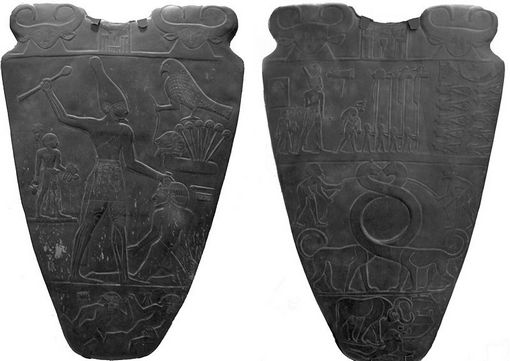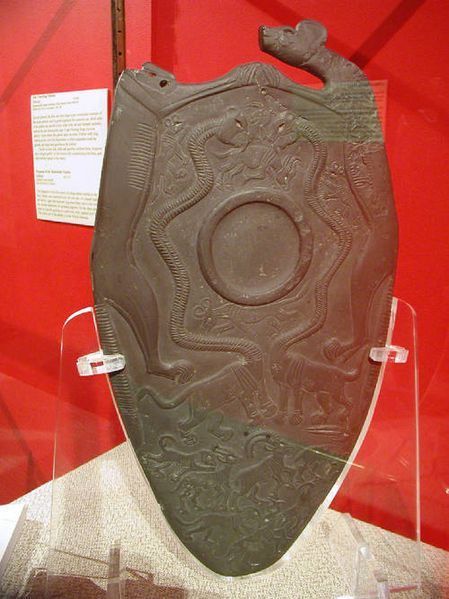Narmer Palette
The Narmer Palette is a significant Egyptian archaeological find, dating from about the 31st century BC, containing some of the earliest hieroglyphic inscriptions ever found. It is thought by some to depict the unification of Upper and Lower Egypt under the king Narmer. On one side the king is depicted with the White crown of Upper (southern) Egypt and the other side depicts the king wearing the Red Crown of Lower (northern) Egypt. It has been called "the first historical document in the world”. (These notes & photos are from Wikipedia.)
No wonder it has pride of place in the Cairo Museum.

The palette was discovered by British archeologists James E. Quibell and Frederick W. Green in the temple of Horus at Hierakonpolis during the dig season of 1897–1898. Also found at this dig was a companion palette, the Hierakonopolis Palette shown below. This and other items unearthed at the that dig are in the Ashmolean in Oxford (recently refurbished – a fabulous museum). You would have thought it would have also taken pride of place there – but no – it is tucked away in a corner of a small room and easily missed! When I visited the newly re-opened Ashmolean Museum (in May 2010), I was given a “Top 22 Highlights of the Museum” list. The Hierakonopolis Palette was not on the list.
The Hierakonopolis Palette

So - why is one object given pride of place in one of the world's premier museums, while its companion is tucked away in a corner of another museum? Strange!


